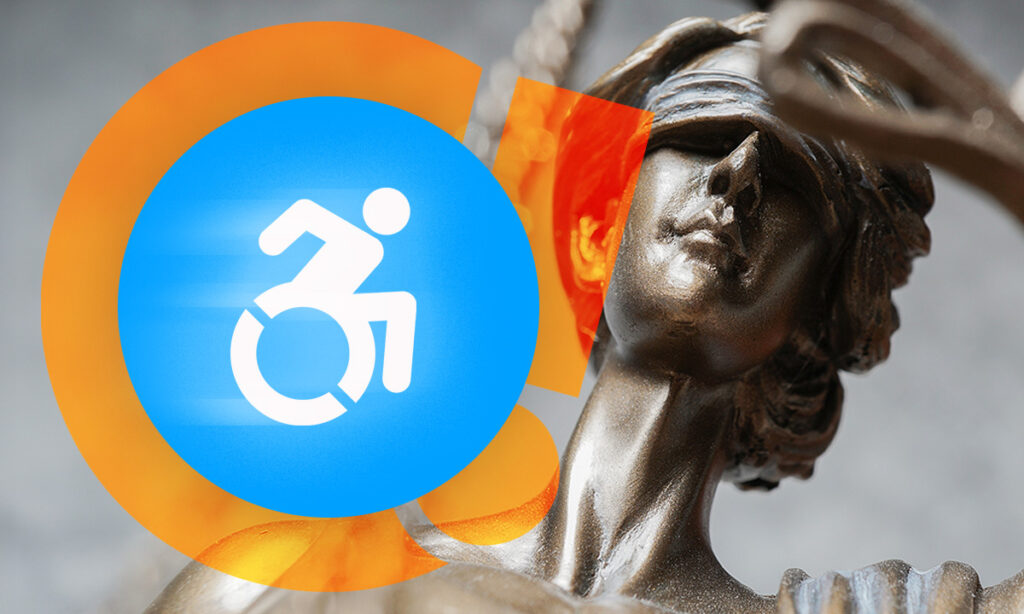The website’s owner, Dr. David Hidalgo, was sued under the ADA — accused of having a site that wasn’t accessible to people with disabilities. A ruling against him could’ve cost thousands and damaged his reputation.
But he does something we recommend to every client: Use accessWidget, an AI-powered accessibility tool.
The judge cited the tool by name in his decision.
The case was dismissed.
We’re stoked.
Digital lawsuits are coming for websites — yours could be next
While this is a great victory and a powerful validation of a tool we’ve trusted and recommended for years, it’s also a warning.
In 2024, more than 4,000 ADA digital accessibility lawsuits were filed, most aimed at small and mid-sized organizations. Nonprofit, for-profit — doesn’t matter.
These aren’t rare incidents anymore.
They’re happening every day.
And the fact is, right now, your website might be exposing your organization to a lawsuit.
- Can people using screen readers navigate your menus?
- Are your PDFs properly tagged?
- Are your donate buttons accessible?
Something as simple as a mislabeled button or an untagged file can trigger legal action, and every violation can cost thousands.
Nonprofits and ADA lawsuits
The Americans with Disabilities Act (ADA) is a federal civil rights law that prohibits discrimination against people with disabilities. It applies to physical spaces and digital ones, like websites. If your nonprofit website is used by the public, you need to ensure your website is ADA-compliant, or you could face legal action.
What accessWidget does
accessWidget, a tool created by a company called accessiBe, works by scanning and adjusting websites in real-time to make them more accessible. In Dr. Hidalgo’s case, his use of accessWidget was backed by documentation, including accessibility statements, audit reports, and expert guidance from accessiBe’s team.
The court saw proof of effort, improvement, and a plan for ongoing compliance. That combination led to the case being dismissed.
Compliance is not optional
As we said above, if your nonprofit provides programs, resources, or services online, you’re likely expected to meet digital accessibility standards under the ADA.
But many nonprofit sites aren’t fully accessible.
Usually, this is due to:
- Limited budgets
- Volunteer-led teams
- Legacy systems that weren’t built with accessibility in mind
Unfortunately, these situations don’t prevent lawsuits.
Accessibility compliance is now a legal and ethical expectation for anyone doing public work on the web.
Accessibility compliance is not a one-and-done fix — it’s a process
Websites change. Content gets added, platforms update, design trends shift and new accessibility requirements can surface anytime.
A single audit or tool install might improve your site today, but without regular check-ins and updates, accessibility barriers can quietly return.
That’s why we recommend these steps:
- Use a solution like accessWidget
- Develop a plan for ongoing updates and monitoring
- Perform regular accessibility scans or audits to catch new or recurring issues
- Assign clear internal ownership: someone responsible for accessibility
- Train staff to build awareness into your publishing process — like ensuring PDFs are properly tagged and digital content meets accessibility standards
- Partner with a vendor or developer who understands both your mission and compliance standards
The earlier you start, the easier it is to maintain, and the less likely you’ll be caught off guard by a legal threat, a frustrated user, or a public complaint that damages your credibility.
And it’s the right thing to do
After all, beyond lawsuits and code fixes, accessibility is more than a legal requirement. It shows how deeply you care about equity, access, and the people you serve.
Need help figuring out what accessibility solutions make sense for your website?

